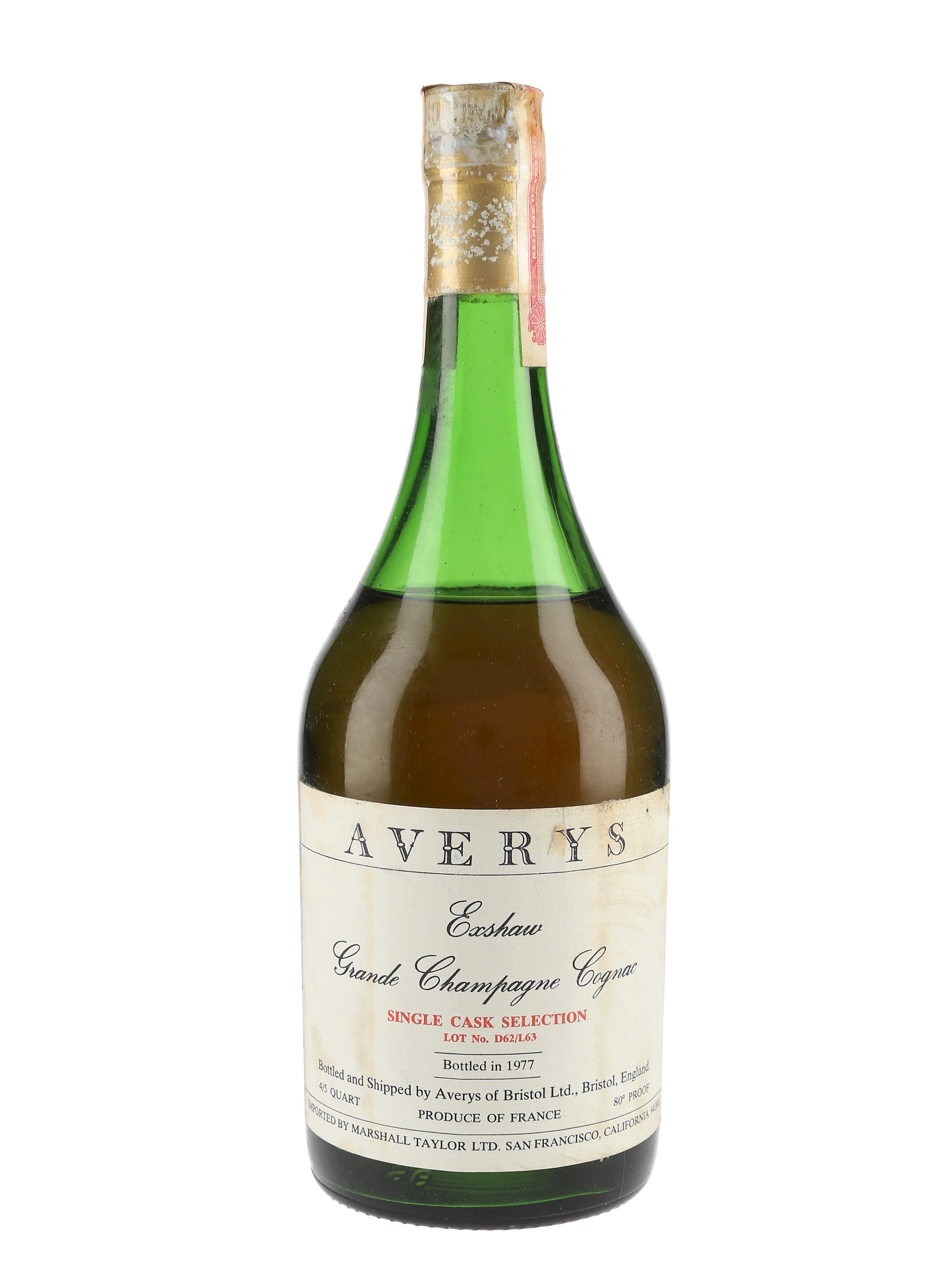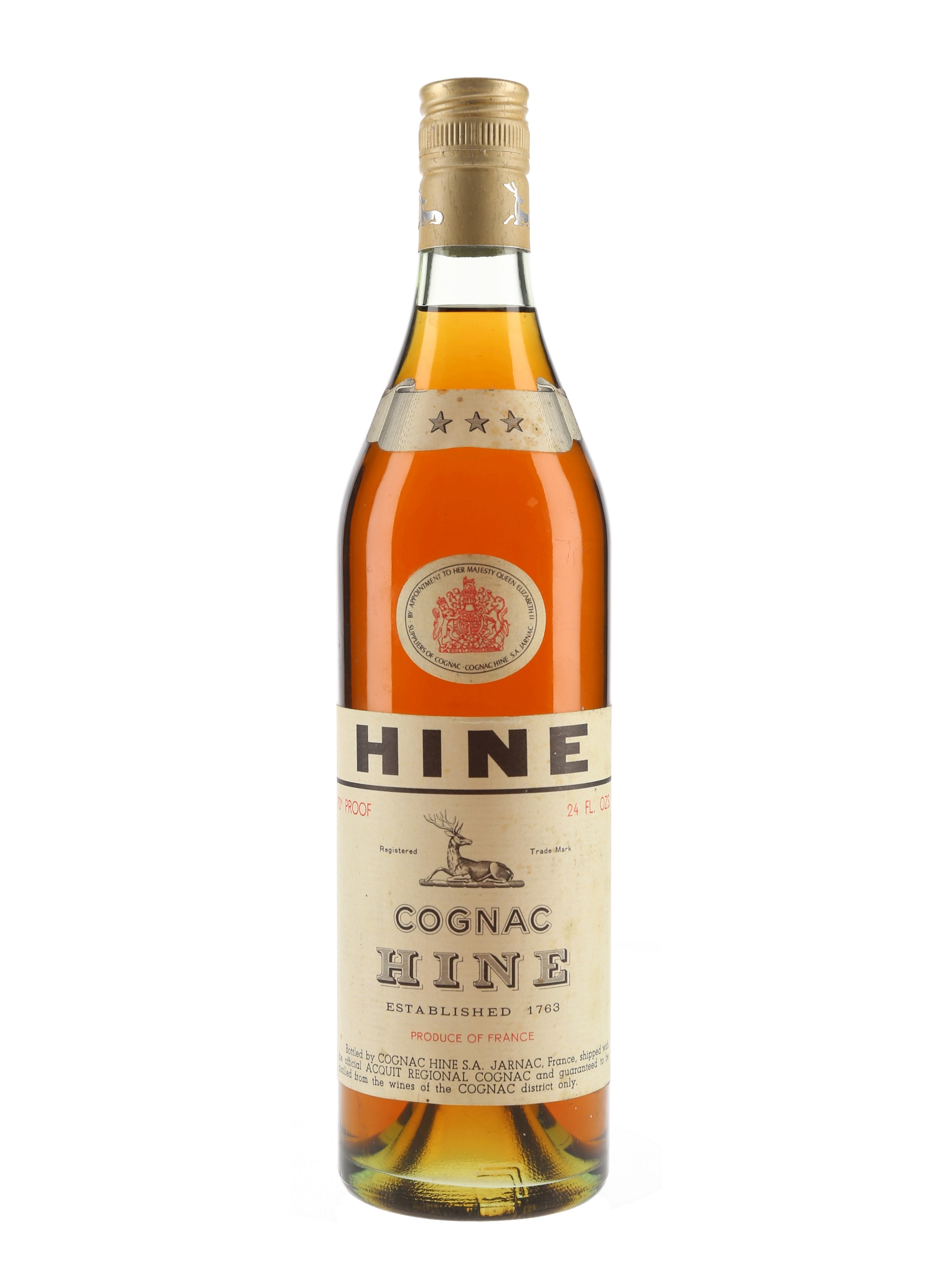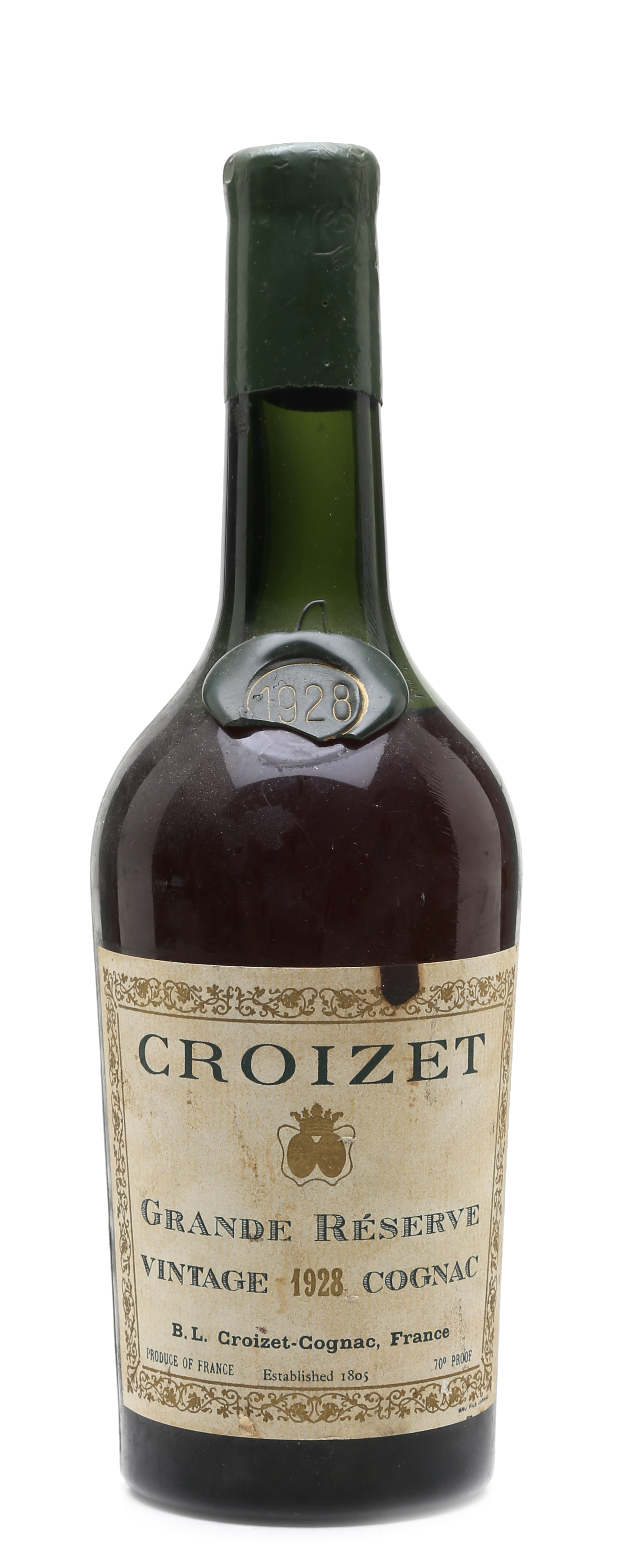
Words by Joe Rogers
The cork in the 1928 Croizet has been in place for more than 50 years. As soon as it’s released from the bottle it crumbles into dust. ‘It might sound obvious, but when you’re buying something like this you want to make sure the seal is intact. Look for a good fill level, because it’s much more volatile than you might think,’ Isabel Graham-Yooll tells me. ‘It’s also a good idea to go into old & rare Cognac knowing the sort of style you like. If you’re a fan of Rémy Martin now, you’re probably going to love old Rémy Martin.’
This is the oldest of the four bottlings on the table in front of us, but we’ll be saving that for the grand finale. Our first taste of history is something a little lighter, two Cognacs of a style that’s been all but lost to time.
AVERYS EXSHAW SINGLE CASK SELECTION BOTTLED 1977

‘Exshaw was one of the first producers to question why they were selling all their stuff to the big houses,’ Isabel explains. ‘They were one of the first to go independent and start selling directly to the UK. So what you have here is really significant in the history of small producers.’
This particular Cognac has been on quite a journey. It was distilled in Grande Champagne in 1962 and then shipped to Bristol the following year. It was then bottled in 1977 for retailer Corti Brothers and northern California restaurant Narsai’s, which at the time was said to have one of the best kept wine cellars in the world. Several bottles from this series have found their way back to the UK in recent years and wound up in the Whisky. Auction offices. Before you even crack the seal, this bottle tells a story.
‘I haven’t had that kind of mushroom note in anything produced recently. I think it would be considered a fault – in fact, it probably is – but if it’s just a hint it’s delicious. it’s just got that je ne sais quoi.’
Bottlings like this offer us a fascinating glimpse of the way things have changed in Cognac over the years. The grape varieties, the growing methods, the regulations, the scale of production have all varied over time. While we can’t say for certain if older bottlings will be better than their modern counterparts, they will certainly be different.
NOSE Intensely perfumed with violets, cinnamon, anise and nutmeg.
PALATE Blueberries, white currants, prunes, fresh porcini mushrooms, warm earth, and old-fashioned herbal liqueurs.
FINISH Delicate but lingering, a little funkiness with overripe fruits and old books.
AVERYS HINE SINGLE CASK SELECTION BOTTLED 1978

Early landed Cognacs like these, filled into cask in the Charente and then further matured in the relatively cool climes of the south of England, used to be enormously popular. ‘Even though these were bottled for the American market, they still give an indication of the style that was available in the UK at this time. This was still in that era where posh English people were drinking pale, dry Cognac after dinner.’ Today, early landed Cognac has all but disappeared from our shelves. Hine still produces the style, albeit in very small quantities, but independent bottlings like this one are a thing of the past.
‘Cognac is so delicate, it’s like a pressed flower in a book or something – you worry that when you open the book it might just fall apart,’ Isabel tells me. ‘But what we can’t know without a time machine is whether this is what they would have tasted like when they were bottled. The production techniques, the preference in style, even the type of closure used is going to affect the way it tastes now.’
We can never know for sure how much the profile of these old Cognacs has developed. But the possibility they have garnered particular flavours and aromas over many decades in glass just deepens the sense that they offer something unique, something not easily found in modern bottlings. And on that note, we try an official Hine for comparison.
NOSE Vanilla, white chocolate, apple blossoms, violets. Remarkably fresh.
PALATE Nicely oily and textural with pine nuts, cashews, and walnuts cut with tart white grapes.
FINISH Delicate and elegant with lingering florals, typical of early landed Cognac.
HINE 3 STAR BOTTLED 1970s

Immediately the difference between this and its early-landed counterpart is apparent. Where the Averys Hine was light and delicate this one is deep amber in colour. Intense aromas of mushroom and old leather hang above the glass.
Sometimes these are really funky when we first open them, but then they loosen up nicely. It might have a bit of OBE [old bottle effect].’ This poorly understood phenomenon is often cited as the origin of nutty, funky, or oxidative flavours in old spirits. ‘Some of our customers absolutely love that. I have a theory that it’s some of the more volatile stuff in there like any additives breaking down over time, but it’s hard to say for sure.’
What’s amazing about this is that even with all the idiosyncrasies and that great sense of age, this has lots in common with modern Hine. Even given all that’s changed in Cognac over the 20th century, you can still see a common thread between the two. We’re in geeky territory here, but for any spirits enthusiast, this kind of comparative tasting is a real treat.
‘There’s much more spice in this one, much more structure. That’s a classic point of difference between early landed and Cognac aged in the region.'
NOSE Very funky at first with dried mushrooms, tin boxes and rust. In time those heavier notes dissipate and you get eucalyptus, yellow plums and apples.
PALATE Much more delicate than the nose would imply. Mint tea, cardamom buns, tea cakes, autumn leaves, a whole cabinet full of dried spices, various honeys, oils and waxes.
FINISH Palate coating and spicy, with dried flowers and some black tea like tannins.
CROIZET 1928 GRANDE RESERVE BOTTLED 1960s

Vintage bottlings like this became much less common after regulations introduced in the mid-20th century made them more difficult to produce. This is a rare relic of Cognac’s wilder, less regulated past. ‘You can see the way regulations have changed over time,’ Isabel explains. ‘Here, on the Croizet, they use the word vintage on the label – on the Averys bottlings they’ve been very careful not to.’
‘Production today is much more controlled, and as a result some of the magic gets controlled out. You take off the edges, you smooth everything out, and everything starts to conform.’
This eau-de-vie predates the creation of Cognac’s governing body, the BNIC, in 1946. It also predates the appellation d’origine contrôlée that regulates Cognac production, introduced in 1936. ‘In theory, what’s in the bottle could be from outside the region and still be called Cognac. This is not to say we should assume that it isn’t Cognac – as we know it today – it’s just that it’s not necessarily that.’
NOSE Mineral at first, with tool boxes and old engines. In time a lighter side comes to the front with irises, violets and citrus oils.
PALATE Pecan pie, pistachio ice cream, dried apples, lardy cakes, chalk, orange liqueur, and fresh white fruits.
FINISH Long and drying with bitter greens and a prickle of woodsmoke. Extremely complex and totally fascinating.
‘Something like this, you’d pick up at auction for a fraction of the price of an old grand marque Cognac and it just tastes like nothing on earth. Even without saying if it’s better or worse than a modern one, you just won’t find this profile. It’s like you’re tasting everything in sepia.’

